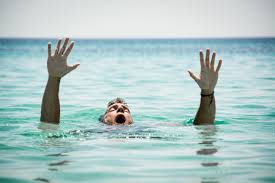 WHO:drowning is the process of experiencing respiratory impairment from submersion/immersion in liquid.
WHO:drowning is the process of experiencing respiratory impairment from submersion/immersion in liquid.
More than 4500 people die from drowning each year in the US
Claims approximately 150,000 lives worldwide annually (Layon AJ, Modell JH).
A leading cause of injury related deaths in the young.
Rates of drowning are greatest among higher risk groups that include young children age 1 to 4 years and adults age 65 years or older, as well as American Indian, Alaska native, and Black people.
A major cause of death for children between the ages of one and four years.
Previously has been the second leading cause of death from injury for toddlers.
Mortality rates among patients treated in US hospitals for drowning range from 10 to 17%.
Fatal drowning rates had been declining among young people until 2020 when the coronavirus pandemic may have increased the death rate due to social changes.
More than 90% of fatal drownings occur in low and middle income countries.
Drowning can result in death, nonfatal injury, or no injury.
In 2020 it was estimated that 7435 individuals were treated in hospital emergency departments for non-fatal drowning episodes.
More than half of the unintentional drowning deaths in the world occur in four countries: China, India, Pakistan and Bangladesh.
There is major under reporting of drownings as sometimes they are registered under suicide, homicide, transportation or weather disasters and vital statistics reporting in low income countries are often inadequate.
Fatal drownings among males in the US are at least double those females throughout the lifespan, and the rates among adolescent boys and young adult men from ages 15 through 24 are approximate five times the rates among adolescent girls and young adult women.
in 2020 the rate of fatal drowning among children 1 to 4 years of age was 2.7 deaths per hundred thousand compared with 0.44 per hundred thousand among children who are 10 to 14 years of age.
Drowning rates tend to increase again in adulthood, peaking among very old adults.
In the US the highest drowning mortality rates are among American Indians and Alaskan natives, and Black persons.
Other groups that have a higher rate of drowning include patients with epilepsy, autism spectrum disorder, and cardiac arrhythmias.
Among infants, most fatal drownings occur in the US in bathtubs.
Children younger than 14 years of age are most likely to drown in swimming pools.
Teens and adults tend to drown in natural bodies of water.
Older women and epileptics are most likely to drown in bathtubs.
10 to 30% of fatal drownings associated with recreational aquatic activity may be attributable to simultaneous use of alcohol.
Commercial fisherman have an occupational fatality rate that is 29 times as high as the national average among all workers, and most of these deaths are due to drowning.
More than any other factor, the duration of submersion predicts the outcome.
Younger age is associated with a better prognosis.
Approximately 10 people die from unintentional drowning every day in the US.
Seventh leading cause of injury deaths and second leading cause of all injury deaths in children ages 1-14.
In 2020 a total of 5419 people died from drowning in the US.
Estimated that more than 4,000 unintentional drownings in recreational water are treated in emergency room departments annually.
During 2001 3,372 persons had fatal drownings in recreational settings.
2 of 10 unintentional drownings are of children age 14 or younger.
Drowning ranks fifth among the leading causes of unintentional injury death in the United States.
Most fatal drownings are accidental, but 9% of drownings in 2020 were ruled to be suicides, and 6%, the intended circumstances could not be determined.
Between 1999-2007 more than 10,000 people below the age of 20 drowned in the United States.
It is estimated that for every child who drowns four children experienced a serious nonfatal near-drowning episode associated with permanent disability.
A significant number of drownings may be secondary to cardiac channelopathies such as congenital long QT syndrome or catecholaminergic polymorphic ventricular tachycardia.
With interventions such as life jacket use, barrier installations, and supervision of young children there’s been a 46% decrease in drowning fatalities for infants under age one year, and a 28% overall decrease among children of all ages.
Drowning victims should be assessed for signs of cardiac activity.
In cases of cardiac arrest hypoxia should be considered the primary cause and CPR including ventilation should be initiated immediately.
Increased survival rates and better neurologic outcomes are associated with ventilatory assistance.
Hypothermia can cause cardiac arrest in patients with prolonged immersion in circumstances that do not involve this fix yet.
At arrival in an emergency department, pulse oximetry, capnography, chest radiography, arterial blood gases, blood glucose, creatinine and electrolyte levels are evaluated.
Endotracheal intubation may be necessary if hypoxemia, hypercarbia, or acidosis is detected.
